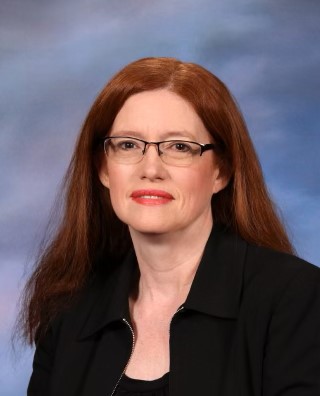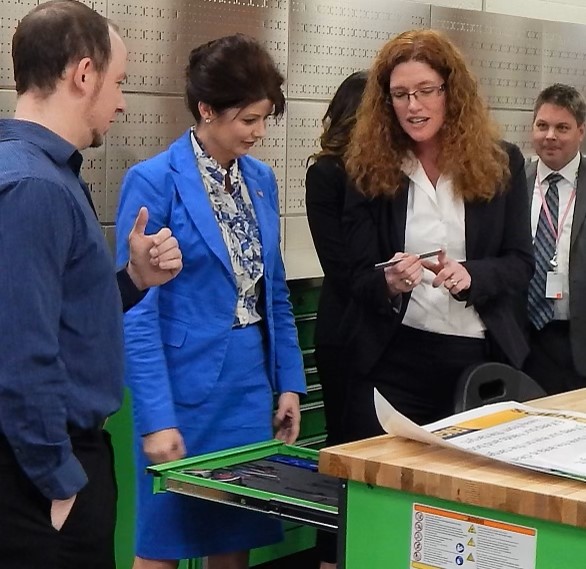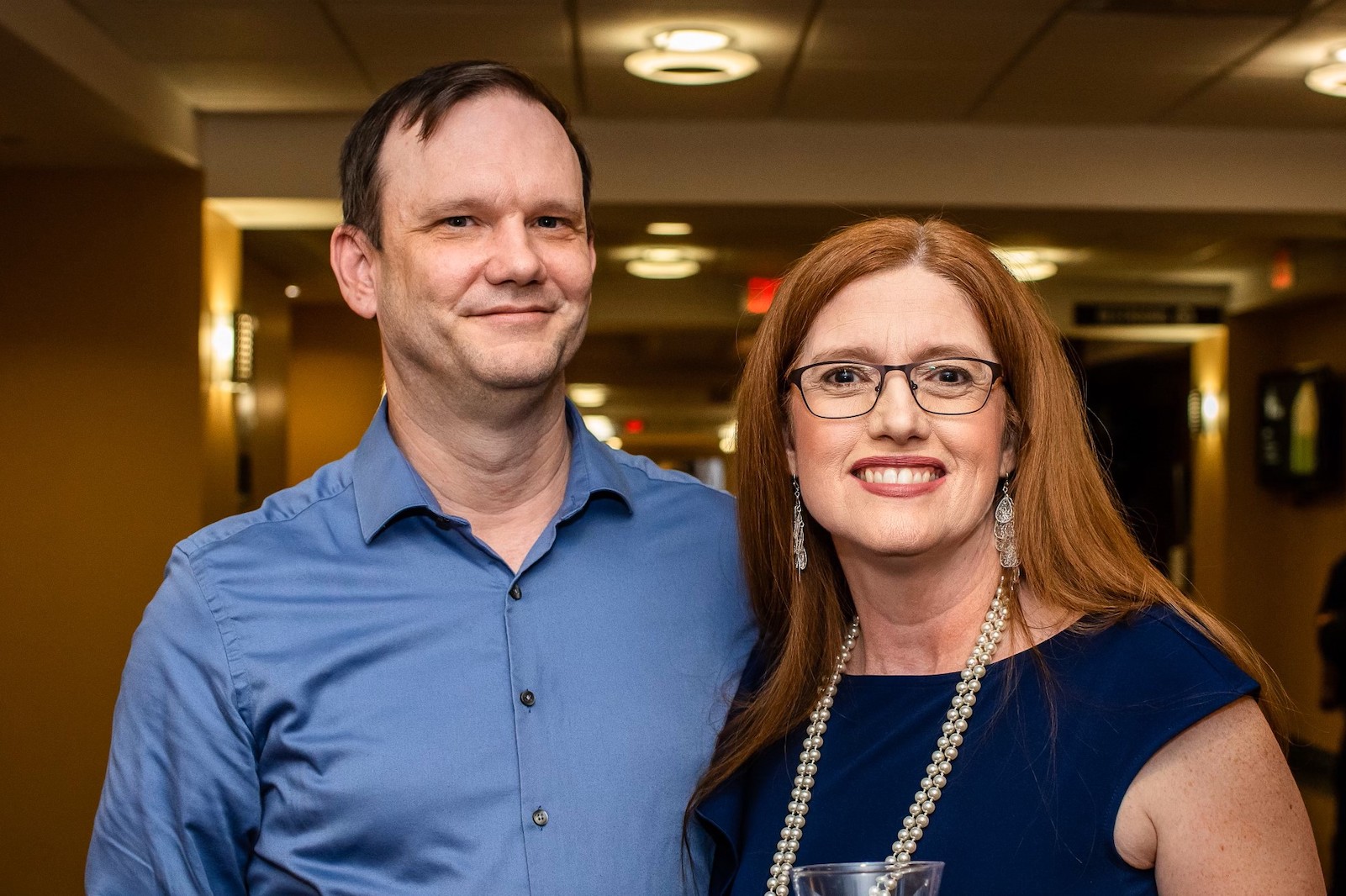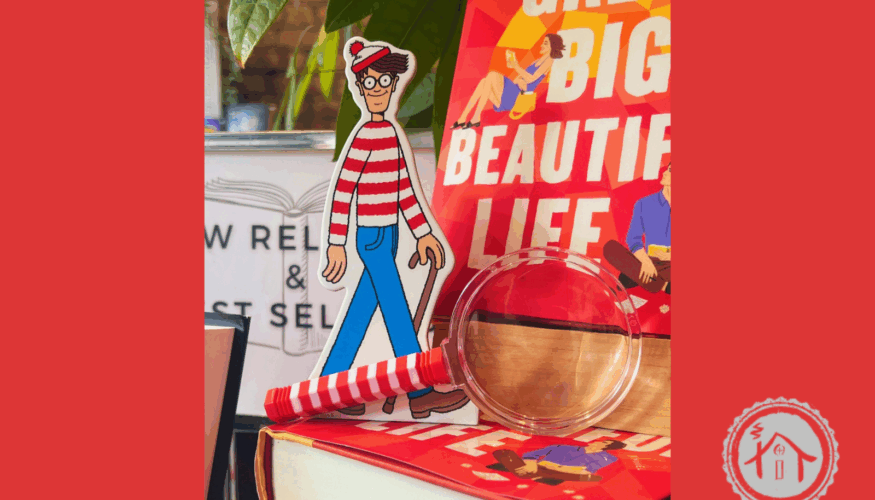Come about the third week of August, if you’re looking for Dr. Angela Andersson, you might have to set sail out on Lake Michigan.
Because, at least until the weather turns cold again, there’s a decent chance Andersson and her husband will be sails-up.
For the last 16 years, Andersson has served as the principal of the Kenosha School of Technology Enhanced Curriculum (KTEC), a K4-8th grade public charter school in the Kenosha Unified School District. As its website states, KTEC “focuses on 21st-century skills and science, technology and math (STEM) education, traditional curriculum enhanced through technology and project-based learning.”

PHOTO: Submitted
Andersson co-founded the school, which began operating in 2007, with Sarah McMillian, who still teaches at KTEC, after both had taught together at KUSD’s Dimensions of Learning Academy.
Now, after a long, successful stewardship over KTEC, Andersson will soon be heading into retirement. Her final day is Aug. 18, which she announced to staff and students on June 20. To mark her retirement and to celebrate her tenure as KTEC’s co-founder and principal, Andersson has been named this week’s Kenosha.com Kenoshan of the Week.
“As an educator, you’re always like, ‘I hope I made a difference,’” Andersson said. “You don’t really know until you kind of announce that you’re going to retire, and then you get to hear from people going, ‘You really did make a difference.’

PHOTO: Submitted
“That’s been really kind and very humbling, and I’m very blessed for that.”
It doesn’t seem like Andersson will have trouble staying busy in retirement. She and her husband, Arthur, keep a sailboat in the Kenosha marina, and they have two sons who are both Navy veterans – one on active duty as a submariner – as well as three young grandchildren.
“I’ll get to spend some more time with my wonderful husband,” Andersson said. “It’s about to be our 33rd wedding anniversary. He deserves a little bit of time where I’m not always at school, crazy hours and all of that.
“… We’re getting ready to pass that baton to whoever is the next person (at KTEC). I said in my letter on my retirement, now I get to be a fan and supporter of KTEC still. So I’m really proud of that.”
Andersson is originally from Texas and received both her Bachelor’s Degree and her PhD in Political Science from Texas A&M University. She came to the Midwest and eventually settled in Kenosha by way of Loyola University Chicago, where she taught after college.
On Friday morning, Andersson took some time with Kenosha.com’s Mike Johnson to talk about her time at KTEC, the legacy she helped build there and what she’ll be doing next. Here is part of that conversation:
How did you get from Texas to Kenosha?
“My husband and I – having grown up in Texas – when I was teaching at Loyola, we were like, ‘OK, we need a place where we can have a garden in our yard.’ … Kenosha was the last stop on the train (from Chicago). We bought a house in White Caps and raised our kids here and built gardens in our backyard and did all of the things that we wanted to do as parents.”
So if people say it’s hot outside right now, being from Texas, you probably tell them it’s not hot at all, right?
“No. No, no, no. And it’s not humid, either. We grew up in Houston. So it’s not humid or hot, no.”
What was the impetus behind starting KTEC and offering the type of education that’s part of the curriculum for students there, so that they can maybe acquire specific skills?
“Remember, this is 2006, when we were starting to plan this. The leading technology is the BlackBerry, so just kind of put that in perspective. The iPhone hasn’t been created yet. We had a grant through the state of Wisconsin at Dimensions of Learning to really look at, how can you use technology within a curriculum – like, I was a social studies teacher, Sarah was a science teacher – to really engage kids?
“… Our basic thought and our little one-page proposal we had (for KTEC) was, ‘How could we use technology to really engage students and enhance curriculum like reading and math and science?’ That was really kind of our big idea at the time. We certainly didn’t know that we were going to write a tool curriculum with Snap-on for elementary students, or have industry certifications, or any of those kinds of things. But we were like, ‘We feel like there’s this need to really engage kids in a different way of using different parts of their brains to convince them that they want to learn the material.’ … COVID messed with the numbers a little bit, but before COVID, we always had 97 percent attendance rates, because who wants to miss school when you get to play with LEGOs and learn with LEGOs, more importantly? Learn (with) LEGOs, use the tools from Snap-on, get to build things, and really use those parts of your brain, that exploratory inquiry, like, ‘I have a question. I want to know how something works. Let’s figure it out.’”
Obviously, not every kid is going to go to a four-year college. Some might, but how important is it to get kids exposed to education that might lead to, perhaps, a career in the trades or a technology field, or to apply that education to a four-year college, should they choose to go that route?
“We often say in our enrollment meetings that we feel like it’s our responsibility at KTEC to open doors for students. Whether that means they want to become an engineer with the skills that we give them, or they want to become somebody with the trades, they want to go to Gateway, or they want to go to a four-year college when they leave us, that they have that confidence – leaving us at the end of eighth grade – that, ‘I can figure this out’ and that, ‘I have options, and I understand what those options and careers might be.’
So, in second grade, I learned the different kinds of hammers and careers where those hammers are used. And I start thinking about, ‘Well, that’s kind of cool,’ and then I read more about that in books and stories. So it’s really about opening those doors of making sure that everybody has some math and science skills, because we know that’s really that doorway that students have to pass through to go to an engineering program, or to go and be successful in any kind of technical-skills work. And then if you choose to be an actress or a musician or a poet, or any of those other kinds of creative things, it’s not bad to have the technical skills to (apply) at your own house.”
After starting KTEC here and building it into such a successful school over the years, do you feel like the benefits of your curriculum, and maybe even how to install it in other locations for their education, have spread far beyond the point at which you started?
“Absolutely. We figured out that in about the four years before COVID, we did about a thousand tours. … That’s not the parent tours and the things for enrollment here, but that’s schools and school districts, colleges, that really look at what we do. We’re really proud of the influence that we’ve been able to have in technical education around the country through visits and support and conversations with leaders and teachers from other schools.
“After COVID, when we could start to do school visits again, that’s really accelerated, because as the need for technical workers has grown, people have started to believe that they need to start earlier with building technical skills in students, which is what we do. When we started as a school in 2007, and even up to COVID, when industry thought about where their next workforce (is), they thought about high school. So it was a struggle in the beginning for us to get industry to really say, ‘Sure, you can bring third- or fourth-graders on tours,’ so we can come and talk to them about what we do. Because that wasn’t seen as their next workforce.
“That has changed. I will tell you, Gateway – through (recently retired Gateway President and CEO) Bryan Albrecht’s leadership – and Snap-on were great supporters of KTEC that saw that need before anybody else did. So we’re so lucky to have Snap-on and Gateway as partners for KTEC. In 2013, they were talking about doing things with elementary students that nobody else in the country was talking about. And that’s allowed us to develop the programs that we’ve really developed.”
What do you and your husband love to do around Kenosha in your free time?
“We love the marina and the harbor. We’re sailors, so we have a sailboat down in the marina. We love the summer and early fall in Kenosha. We often stay down on the boat on Friday nights, hit the HarborMarket and the Public Market on Saturday mornings, and just the places you can walk around – good food and entertainment downtown during the summer. That’s really special to us.
“I’m looking forward to getting a little more time on that boat than I do when I’m running a school of 1,200 students.”











